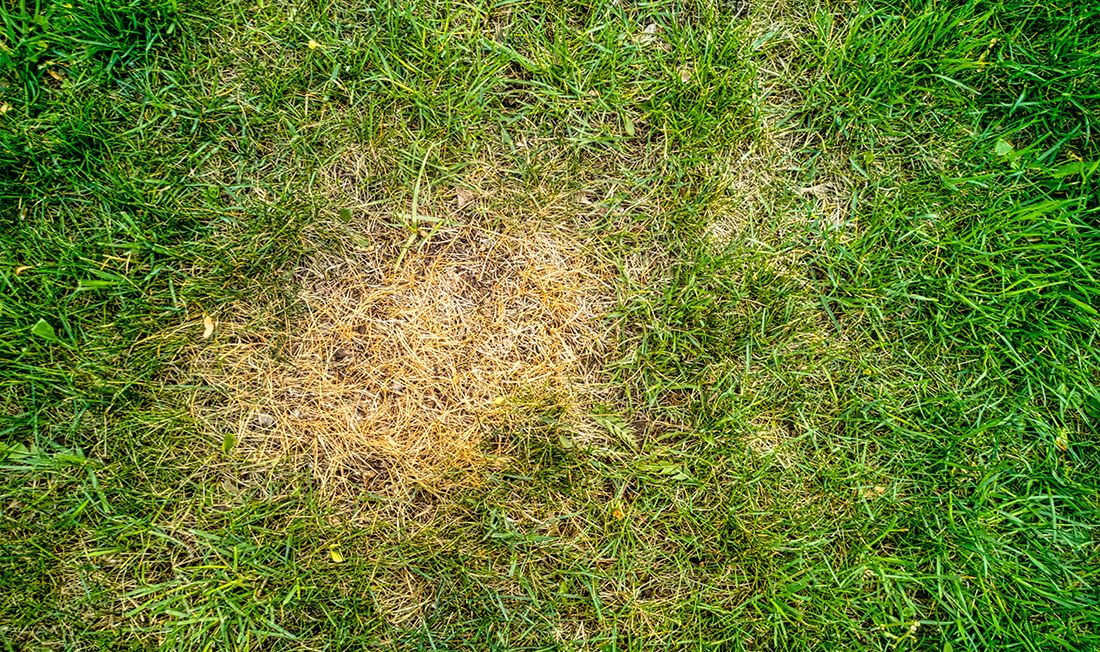Unfortunately, too many of us are familiar with the dreadful feeling of walking outside in the morning only to see that our beautiful, green lawn has been stricken with some sort of…something. Whether it be patches of discolored grass, or an entire lawn that is brown and crunchy, it causes a sinking feeling in the pit of your stomach. This is especially the case if you suspect that the problem may be a result of your own doing. Fertilizer burn can be one of those self-imposed issues that can result in a rapid change in your lawn from a deep green to various shades of yellow and brown. Fortunately, with a bit of care, the effects can be reversed and prevented in the future.
What Causes Fertilizer Burn?
Imagine eating a spoonful of table salt. The result would be a dry mouth, dehydration, and you would likely be left with a burning sensation on your tongue. Excess of certain fertilizers, which also contain salts, can induce the same effect on plants. While fertilizers don’t contain the same salt that you put on your steak, they have similar characteristics. Salts are a variety of compounds that carry both a negative and a positive charge. Common fertilizer salts include potassium chloride, ammonium sulfate, and ammonium nitrate. When applied in excess, these fertilizers can draw water out of the plant via osmosis. The resulting “fertilizer burn” appears as the plant is dehydrated and cannot take up more water until the salts levels in the soil are stable.

How Do You Prevent It?
The primary reason for fertilizer burn is overapplication of fertilizers. Read your labels carefully to ensure that you’re not applying too much at one time. Certain conditions can exacerbate the effects as well. When the weather is hot and the soil is dry, damage can occur more easily as the plants are already in high demand for water. It’s best to apply fertilizers in moderate temperatures. In the summer, this likely means morning or evening applications. Follow up your application with irrigation (allow liquid fertilizers to dry first), and ensure that your soil moisture level remains adequate in the weeks to follow.

Salt Buildup
Salts can also build up in soils via repeated application of synthetic fertilizers over time. Incorporate organic fertilizers into your lawn care regimen and utilize liquid products as frequently as possible. Granular fertilizers carry greater concentrations of nutrients, which can cause higher amounts of salt to build in the soil. In some cases, irrigation water can be a source of excess salts in the soil, and your fertilizer application can deal the final blow. Ask your irrigation specialist about testing your irrigation water for excess salts and rectify the situation if necessary.

How Do You Reverse It?
If the damage is already done, all hope is not lost. Fertilizer salts can continue to inflict damage as long as the concentrations in the soil are at high levels. To reduce soil salt levels, run your irrigation for several long sessions to leach the salts out of the root zone, and in the meantime, avoid application of fertilizers. As previously mentioned, ensure that your irrigation is also not a source of excess salt. If damage persists, re-seeding may be likely. It’s often important to add a phosphorus fertilizer at seeding to promote early root growth and ground cover, so utilize a pure phosphorus fertilizer, such as superphosphate or triple superphosphate, as these carry minimal concentrations of salts.










